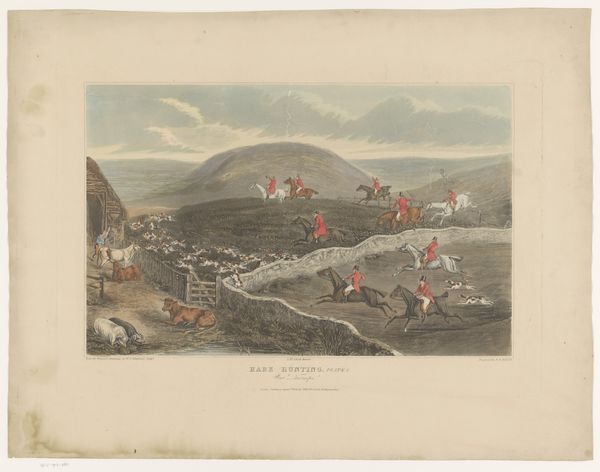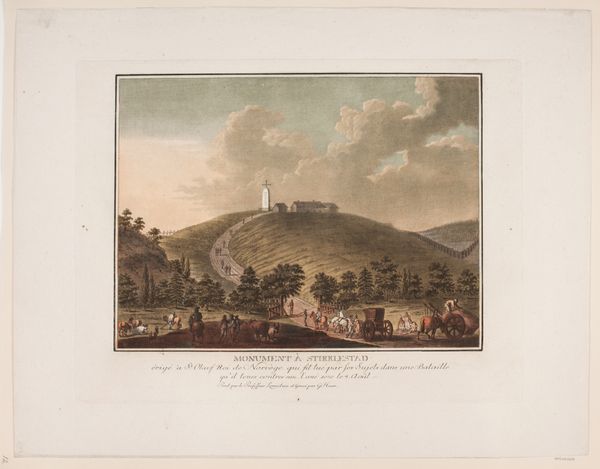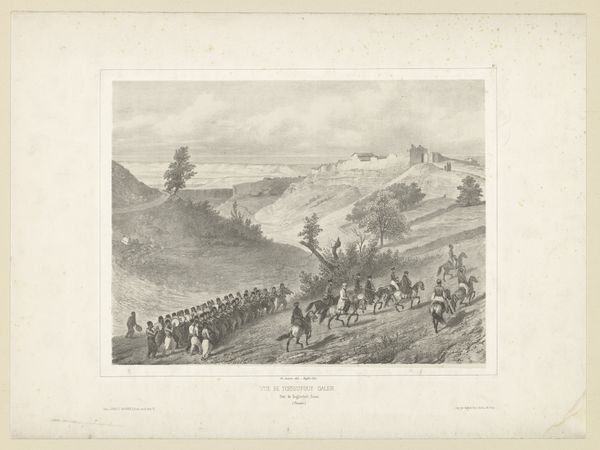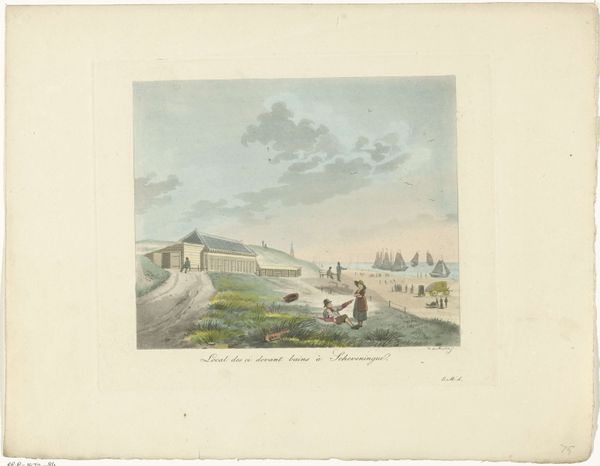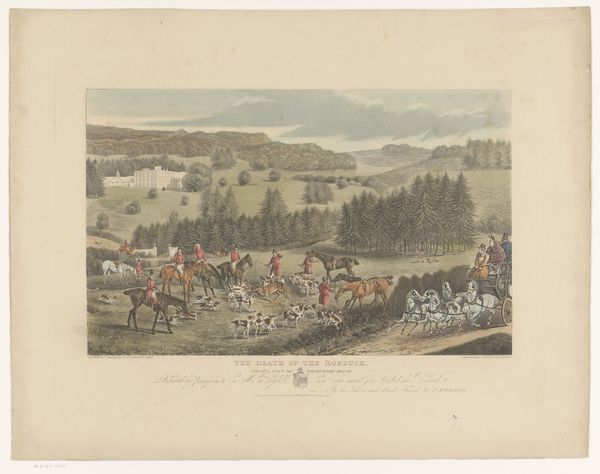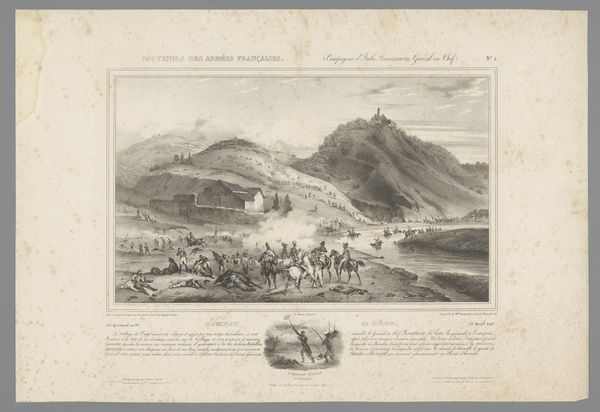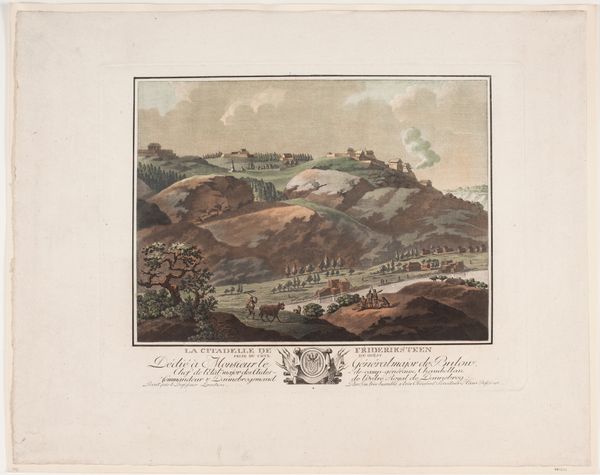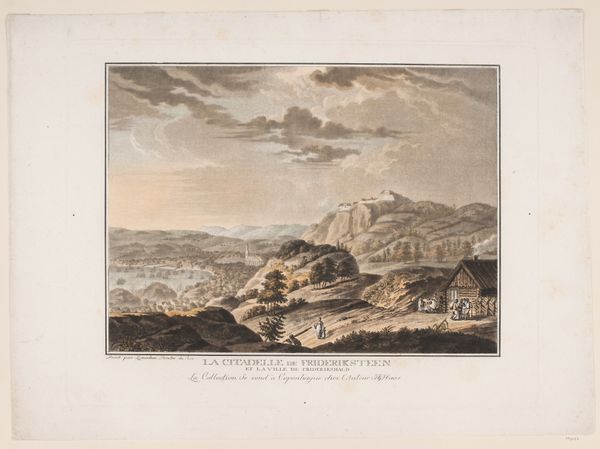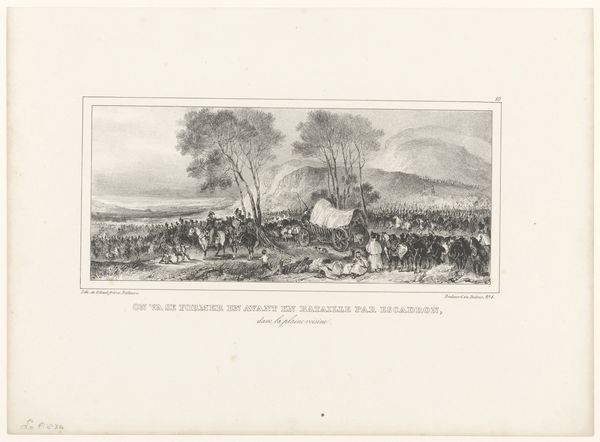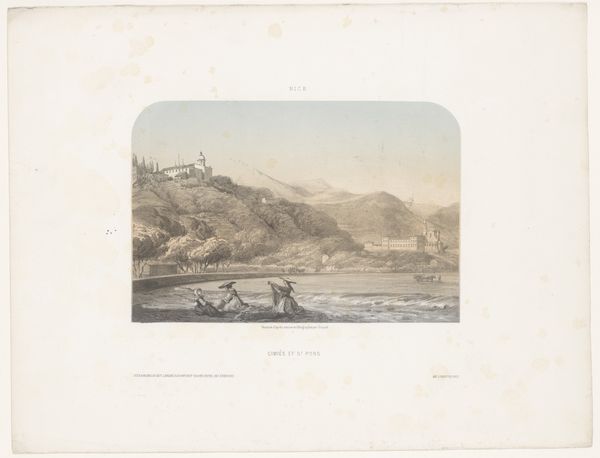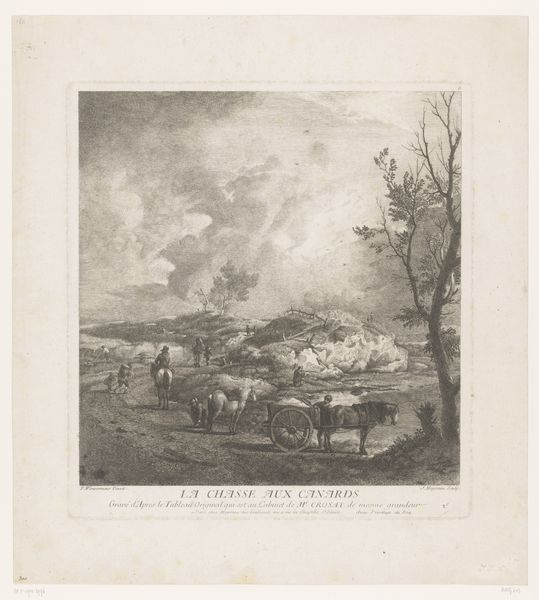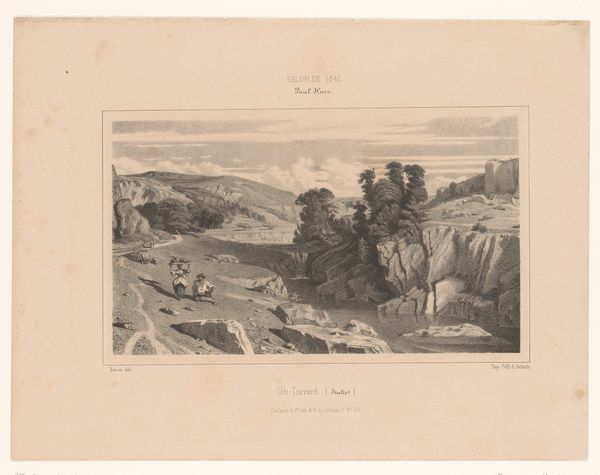
Heuvelachtig landschap met jagers en honden in een veld op hazenjacht 1836
0:00
0:00
watercolor
#
water colours
#
landscape
#
watercolor
#
romanticism
#
watercolour illustration
#
genre-painting
Dimensions: height 401 mm, width 582 mm
Copyright: Rijks Museum: Open Domain
Curator: The sheer flurry of red in Reeve’s "Heuvelachtig landschap met jagers en honden in een veld op hazenjacht", painted in 1836, immediately strikes me. Editor: A dynamic splash of colour, wouldn't you agree? One notices that these aren't isolated incidents; it’s the chromatic intensity, especially that red, and its strategic scattering throughout, that captures one’s attention. But how did this colour resonate with Reeve’s patrons and, more broadly, with the artistic material economy of early 19th-century England? Curator: Indeed! Reeve’s utilization of watercolor printing suggests an engagement with the Romantic movement, moving beyond the purely representational and verging into the atmospheric. You sense this shift in how landscape becomes a stage for human drama. What is especially curious here is its implications of material value linked to that "human drama," the labour invested not just in the hunt depicted, but in the very production and distribution of prints such as these to bourgeois audiences? Editor: The semiotics of this hunting scene read almost as a symbolic interplay—a dialectic between nature, as rendered in pale watercolors, and culture represented by that scarlet. Reeve skillfully orchestrates the composition around it. Can one also understand this red in terms of British imperial aspirations? Does its production, extraction and symbolic significance reveal the impact of material encounters through empire? Curator: Intriguing. Let’s consider Reeve's process more closely. He worked within a printmaking economy highly dependent on exploiting the global color supply, in this instance it gave the artist to reflect upon labor practices on domestic and far-flung land and it gives this artwork meaning. Editor: The hunt as a coded tableau. I find that fascinating, viewing each brushstroke as more than just material application, but rather the conscious intention of meaning and emotion by way of color as an important marker of social status. Curator: And I would respond with that meaning-making occurring within the material realities of colonial England, linking land exploitation and class divisions to global systems of colour supply and distribution in such prints. Editor: Ultimately, what seems evident is the confluence of materiality, method, and semiotic articulation, wouldn’t you concur? Curator: Definitely, leading to a rich contextual understanding. Editor: Agreed, it deepens our perception, revealing complex visual relationships.
Comments
No comments
Be the first to comment and join the conversation on the ultimate creative platform.
